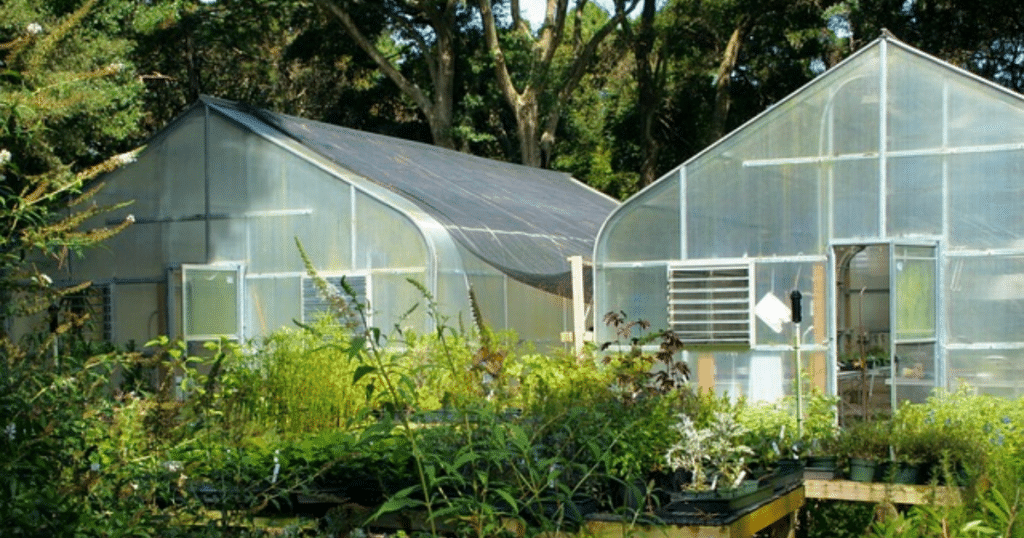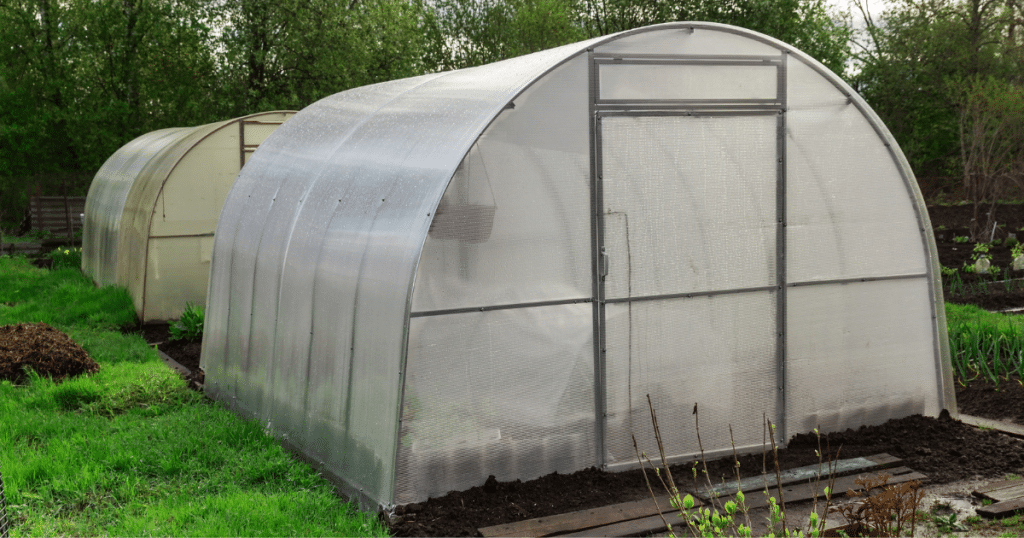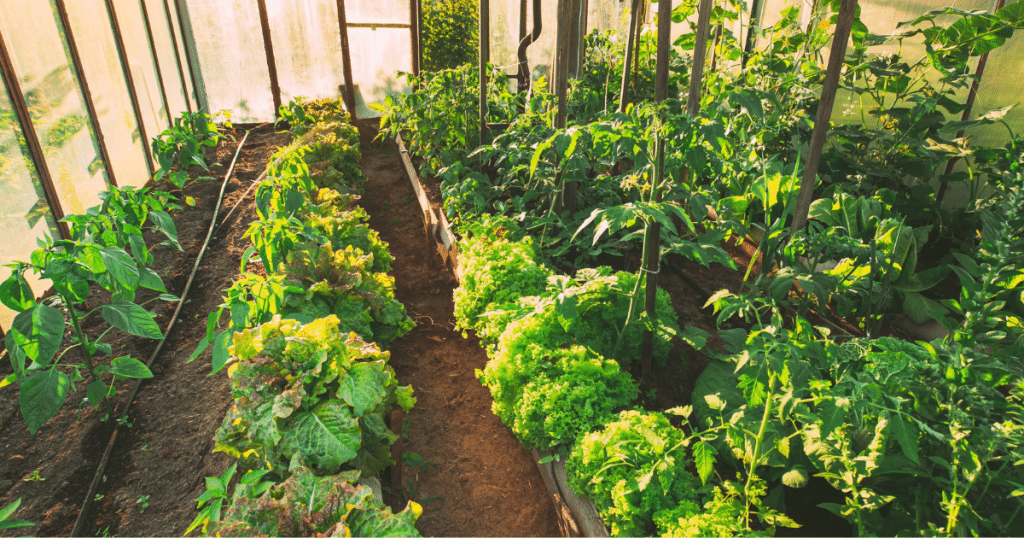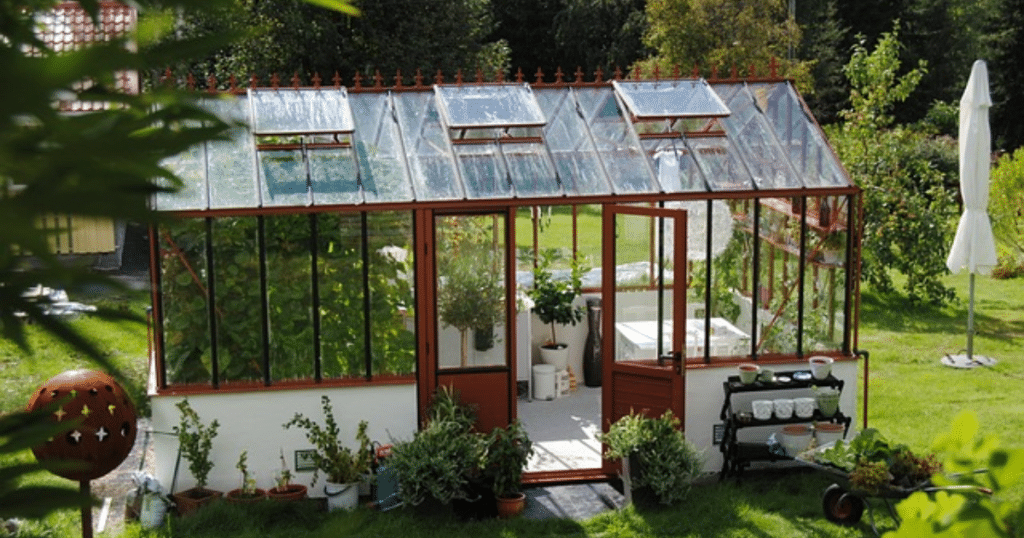How to Grow Plants Year-Round: Organic Greenhouse Gardening
Are you tired of waving goodbye to your garden's vibrant colors and lush greenery as the seasons change? Imagine having the power to extend your gardening joy beyond the limitations of the weather. Greenhouse gardening is a fascinating world where you create a haven for your plants to thrive.
In this article, we will learn simple tips for greenhouse gardening. Discover how to grow your favorite plants, create the right atmosphere, and reap the rewards daily. You're about to start on a trip that will change your gardening experience, whether you're a pro or a beginner with a passion for plants. Explore year-round greenhouse gardening and see how you may make your green fantasies come true.
Benefits of Greenhouse Gardening
Greenhouse gardening offers many advantages that go beyond traditional outdoor gardening methods. Greenhouses empower you to achieve higher crop yields. Here are key benefits that make greenhouse gardening a smart choice for both beginners and seasoned gardeners:
Extended Growing Season
Greenhouse gardening breaks you free from weather limitations and can extend the seasons. With the ability to regulate temperature and humidity, you can start planting earlier in the spring and continue growing well into the fall and even winter. This extended growing season means you can enjoy fresh produce and vibrant blooms all year round.
Precise Climate Control
Greenhouses allow you to play Mother Nature by controlling the climate within. Greenhouse gardening offers a remarkable opportunity to expand the range of plant varieties that can be successfully grown even in cold weather. You can adjust the greenhouse temperature, humidity, air circulation, and light to match the optimal conditions for different plant species.
This level of precision enables you to cultivate plants that might not thrive in your location, unlocking a world of possibilities. The controlled greenhouse environment allows cultivating plants that might be challenging to grow in your local outdoor conditions.
Protection from Pests and Diseases
Creating a barrier between your plants and the outside world, greenhouses protect your outdoor garden against pests and diseases. This protection drastically reduces the need for harmful pesticides and allows plants to flourish naturally. Say goodbye to battling common nuisances and hello to healthier, more vibrant plants.
Optimal Plant Growth
With a greenhouse, you hold the reins to the growth of your plants. You can tailor the environment to meet their needs, ensuring they receive light, water, and nutrients. This personalized care results in faster growth, stronger roots, and bigger yields – a gardener's dream come true.
Reduced Competition:
In traditional gardens, plants compete for light, water, and nutrients. In a greenhouse, you have more control over resource allocation, minimizing competition and ensuring each plant receives the most sun and necessary nourishment for optimal growth.
Protection from Extreme Weather
Greenhouses protect your vegetables from harsh winds, heavy rains, hailstorms, frost, heat, and other extreme weather events, preventing physical damage and plant stress.
Year-Round Growing
Imagine picking juicy strawberries in winter or inhaling the fragrance of blossoms during the chilliest months. Greenhouse gardening turns these dreams of many gardeners into reality. It enables you to grow your own food year-round besides extending the season of cool weather crops. The joy of tending to lush greenery, regardless of the season outside, is an unparalleled pleasure only greenhouse enthusiasts experience.
Mental and Health Benefits
Engaging in greenhouse gardening offers a range of health benefits. Spending time amidst greenery and caring for plants reduces stress and promotes relaxation. Moreover, observing plants grow boosts mental clarity and emotional well-being.
The physical activity involved in planting, watering, and pruning provides gentle exercise. These contribute to improved cardiovascular health and muscle tone. Fresh air supplemented by plant oxygen can improve lung function and respiratory health.
Selecting the Right Greenhouse

Choosing the perfect greenhouse requires thoughtful consideration and careful planning. This influences the success and enjoyment you'll derive from your greenhouse plants. Here are key factors to keep in mind when selecting a suitable greenhouse:
Size and Space Considerations
Before you delve into greenhouse options, assess the space in your yard or garden. Consider both the dimensions and layout of the area. Are you looking to cultivate a small collection of various plants inside, or do you envision a more expansive greenhouse for various purposes? Determining your desired size ensures your greenhouse complements your available space and meets your gardening goals.
Material Choices
Greenhouses come in various materials, each with distinct advantages and considerations. Glass greenhouses offer unmatched visibility and light transmission, fostering optimal plant growth. Polycarbonate greenhouses are durable and offer superior insulation, making them ideal for harsh climates. On the other hand, plastic greenhouses are cost-effective and easy to assemble, making them a popular choice for beginners.
Ventilation, Insulation and Lighting
When choosing the right greenhouse kits, several vital factors are ventilation, insulation, and lighting. These elements are critical for creating an optimal growing environment for plants.
Proper ventilation is crucial to the greenhouse's temperature control, humidity, and air quality. Consider the following aspects:
a. Ventilation System: Choose a greenhouse with effective ventilation systems, such as roof vents, side vents, or exhaust fans. These systems help regulate temperature and prevent the buildup of excess humidity. Fortunately, most vegetables prefer a humid atmosphere, while too much humidity can cause fungal illnesses and plant diseases.
b. Automatic Controls: Invest in automated ventilation controls to maintain the greenhouse environment within the desired range. This can include temperature-sensitive mechanisms that open vents or activate fans when conditions become unfavorable.
Additionally, effective insulation ensures your greenhouse remains cozy during colder periods. Your vegetables and other homegrown fruits will thrive with proper ventilation and insulation.
Adequate and appropriate lighting is essential for plant growth. Consider the following for proper greenhouse lighting:
a. Natural Light: Choose a location for your greenhouse that receives ample natural sunlight. South-facing orientations are generally preferred for optimal light exposure.
b. Artificial Lighting: Depending on your crop and climate, you may need supplemental artificial lighting. LED grow lights are energy-efficient and can be tailored to specific plant requirements.
c. Light Control: Implement light control mechanisms, such as shades or blinds, to prevent excessive light exposure during hot summers or to create optimal day/night cycles for plant growth.
d. Light Spectrum: Different plants have varying light requirements. Select lighting systems that can provide the right spectrum of light (e.g., blue and red wavelengths) for photosynthesis and growth.
Local Climate and Regulations
The climate in your region plays a vital role in greenhouse gardening. Consider factors such as average temperatures, humidity levels, and wind patterns. Some greenhouses are better suited for specific climates, so choosing a model that can withstand the challenges posed by your local weather conditions is important. Additionally, check local regulations and permits required for installing a greenhouse on your property.
Preparing the Greenhouse Growing Site

Preparing a greenhouse site involves several key steps to ensure a thriving environment. Here's a general outline of the process:
1. Site Selection:
Choose a location that receives ample sunlight throughout the day. Most plants require at least 6 hours of direct sunlight, so pick a spot that minimizes shading from trees or structures. Also, consider accessibility to water and electricity sources.
2. Clearing and Leveling:
Clear the area of any debris, rocks, weeds, trees, and other obstructions. Leveling the ground as much as possible makes construction and placement easier.
3. Greenhouse Construction:
Assemble the greenhouse according to the manufacturer's instructions. Make sure all components are securely fastened and properly aligned. This includes setting up the frame, installing the glazing (glass or plastic panels), and adding any necessary ventilation systems.
Plants require heating, cooling, irrigation, and/or electricity; ensure the necessary systems are in place. This might involve laying pipes for watering systems and gas, installing electrical outlets and wiring, and setting up climate control mechanisms.
4. Setting Temperature and Humidity Control
Setting temperature and humidity control in a greenhouse is straightforward. Adjust the thermostat to the desired level using the dial or digital controls for temperature. Implement heating systems for winter periods and cooling methods for warmer ones. This balance ensures plants thrive in a consistently warm, humid environment. Open vents or windows to let cool air in if it gets too hot.
Monitor humidity levels closely, as excessively humid conditions can encourage mold growth and other issues. To manage humidity, use a hygrometer to watch levels; if it's too high, provide ventilation, and if it is too low, mist plants or use a humidifier. Finding the right balance ensures your plants thrive in the optimal environment for growth.
5. Choosing Garden Beds or Containers
Choosing between garden beds and containers is crucial to their growth and success. Beds offer the advantage of providing ample space for root expansion and a natural planting environment. They allow for greater soil volume and better moisture retention, reducing watering frequency.
Containers allow for better soil composition control and fit unique plants. They also make it easier to move or rearrange crops as needed. Consider the space available and the types of plants you intend to grow when deciding between beds and containers. At the same time, containers are perfect for small plants or leafy greens. Each option has its merits, and the right choice depends on your greenhouse goals and the needs of your plants healthy growth.
6. Soil Preparation and Planting
Test the soil to determine its composition and pH. You might need to amend the soil with organic matter or other materials to improve soil level, drainage, water retention, top quality and nutrient content. Proper soil preparation will contribute to healthier plant growth.
Use well-draining soil mixes enriched with organic matter. Proper soil preparation is essential for healthy root development and overall plant growth.
Follow recommended planting techniques for each species. This might involve sowing seeds, transplanting seedlings, or taking cuttings.
Start Seedlings
Starting seeds in your greenhouse is a fun and rewarding way to start gardening. Gather your seed packets for lush greenery and bright blooms. Plant seedlings in sterile seed-starting trays or pots with well-draining mix to avoid soggy roots. Plant your seeds according to seed packet instructions for optimal depth and spacing.
Easy Plants for Greenhouse Gardeners

Choosing the right plants can make all the difference for those beginning their greenhouse gardening journey. Greenhouses prevent pests from ruining crops in chilly, rainy climates. Consider starting with easy-to-grow cold, hardy greens like lettuce, kale, chard, tat soi, pac choi, and more. Plant these veggies in late summer to enjoy throughout the winter. Herbs such as basil, mint, and parsley are perfect additions to square footage.
Perennials that require a warm environment to overwinter: Tender plants such as geraniums, dahlias, gladiolas, peppers, and tomatoes will survive the winter in many locals in favorable conditions.
These plants are adaptable to different growing conditions and offer a quick turnaround from planting to harvest. Whether you're growing tropical plants or veggies, the greenhouse design and settings will depend on the plants. Use your greenhouse to build confidence and experience to nurture and harvest your first greenhouse crops.
How to Maintain Your Greenhouse Garden
Maintaining a thriving greenhouse garden requires consistent attention and care. Regularly monitor moisture levels in the soil, adjusting your watering routine as needed to prevent overwatering or underwatering. Keep a close eye on temperature and humidity, ensuring they remain within optimal ranges for your plant species.
Prune and train your plants regularly to encourage proper growth and airflow, and stay vigilant against pests and diseases by implementing preventative measures. Regularly clean and sterilize tools, containers, and surfaces to prevent the spread of pathogens. Fertilize according to the needs of your plants and perform routine maintenance on your greenhouses' ventilation and heating systems.
By staying proactive and attentive, you'll create a nurturing environment that fosters the health and vitality of growing in a greenhouse.
Conclusion
In conclusion, hardy gardeners love seeing their plants alive against all difficulties. Consider a greenhouse if you're a beginner with a few potted plants or a seasoned gardener looking to improve. It's more than a building—an entrance to a universe where nature may be softly molded to your benefit. A greenhouse lets you dream large and grow in ways you never thought imaginable.
Ready to enjoy year-round gardening? Don't delay. Start greenhouse growing today and watch other plants in your garden thrive with vibrancy, color, and life. Your greenhouse can be a canvas for your gardening aspirations, a sanctuary for your plants, and an inspiration to those who see it.
Growing under cover, whether in a hoop house or greenhouse, is the best way to grow winter crops, extend your season, and even grow crops that you “shouldn't” be able to grow in your area.

